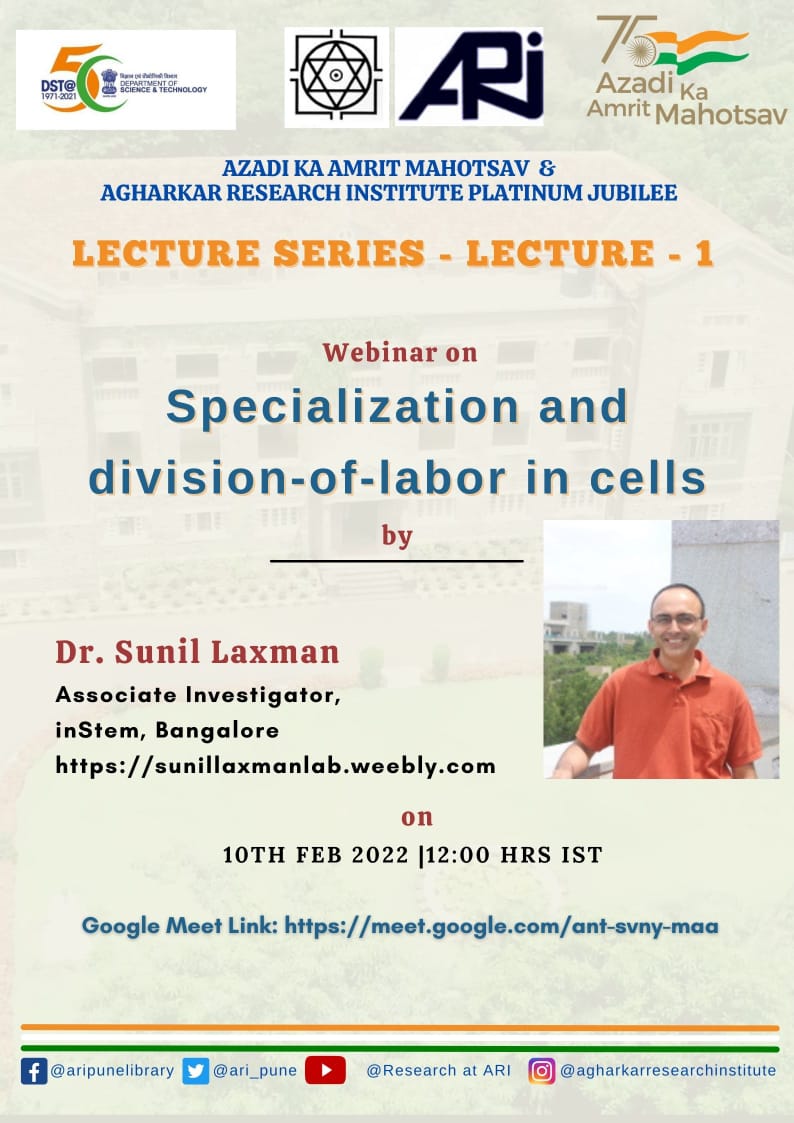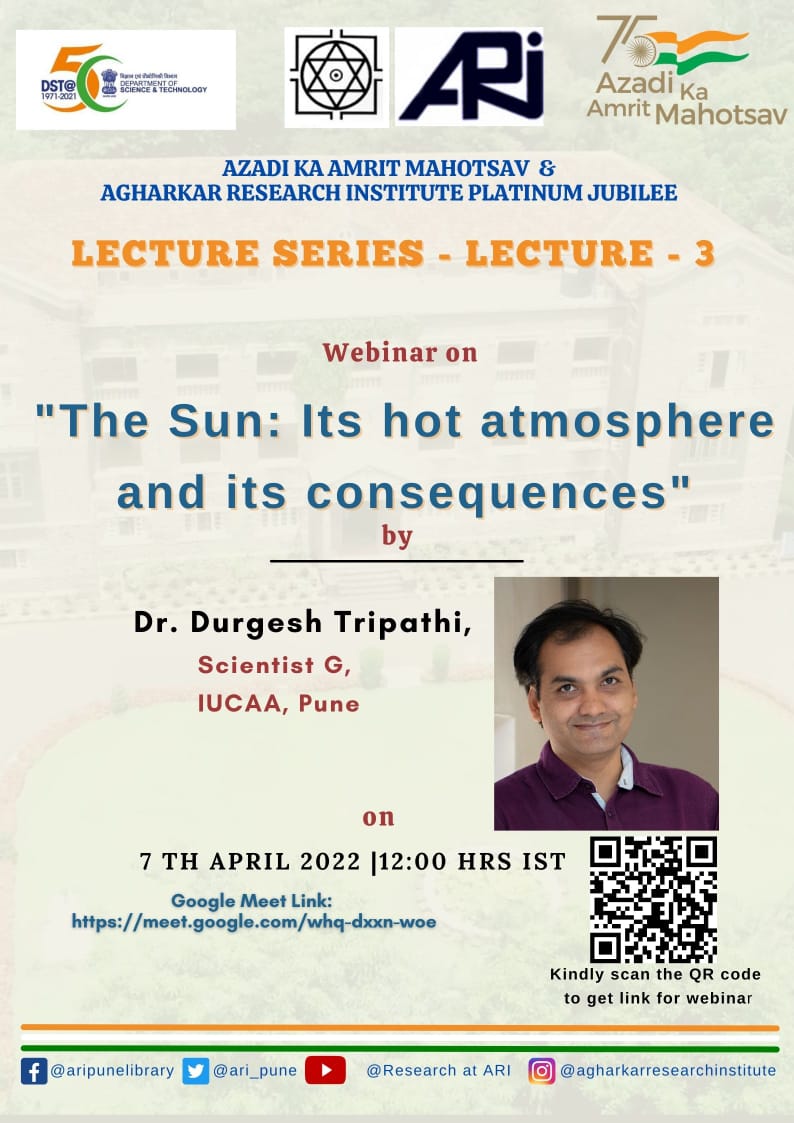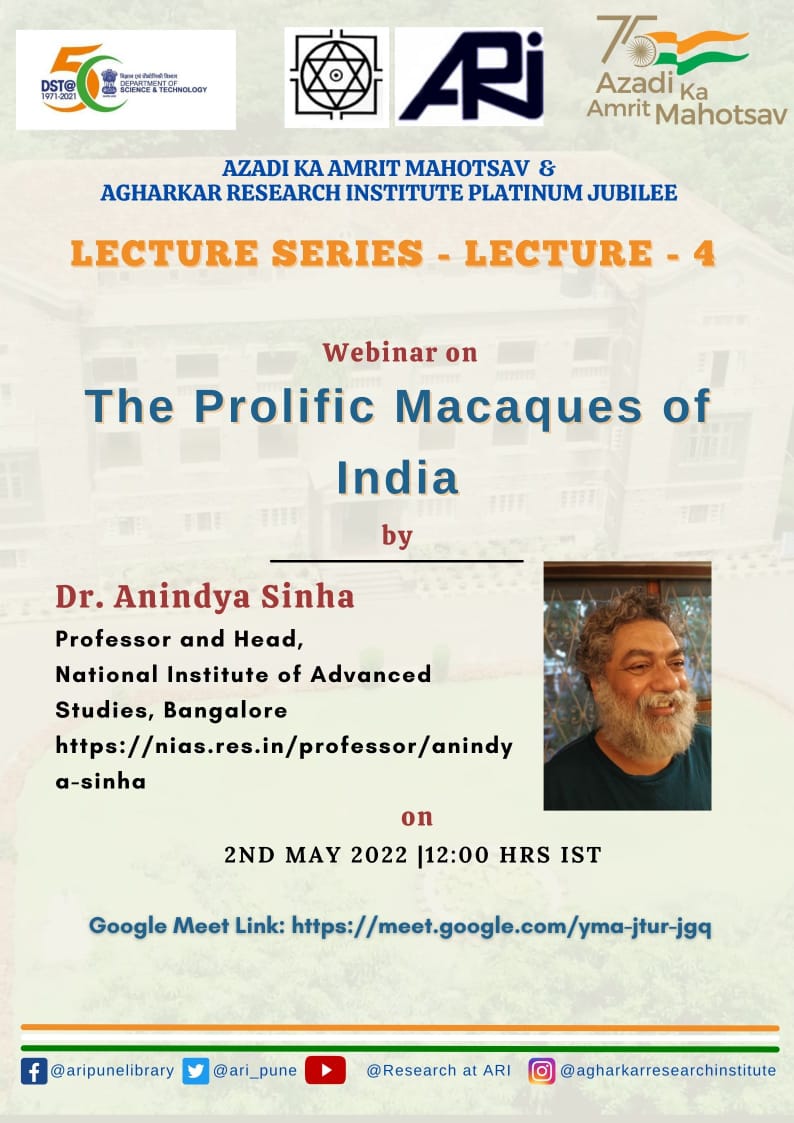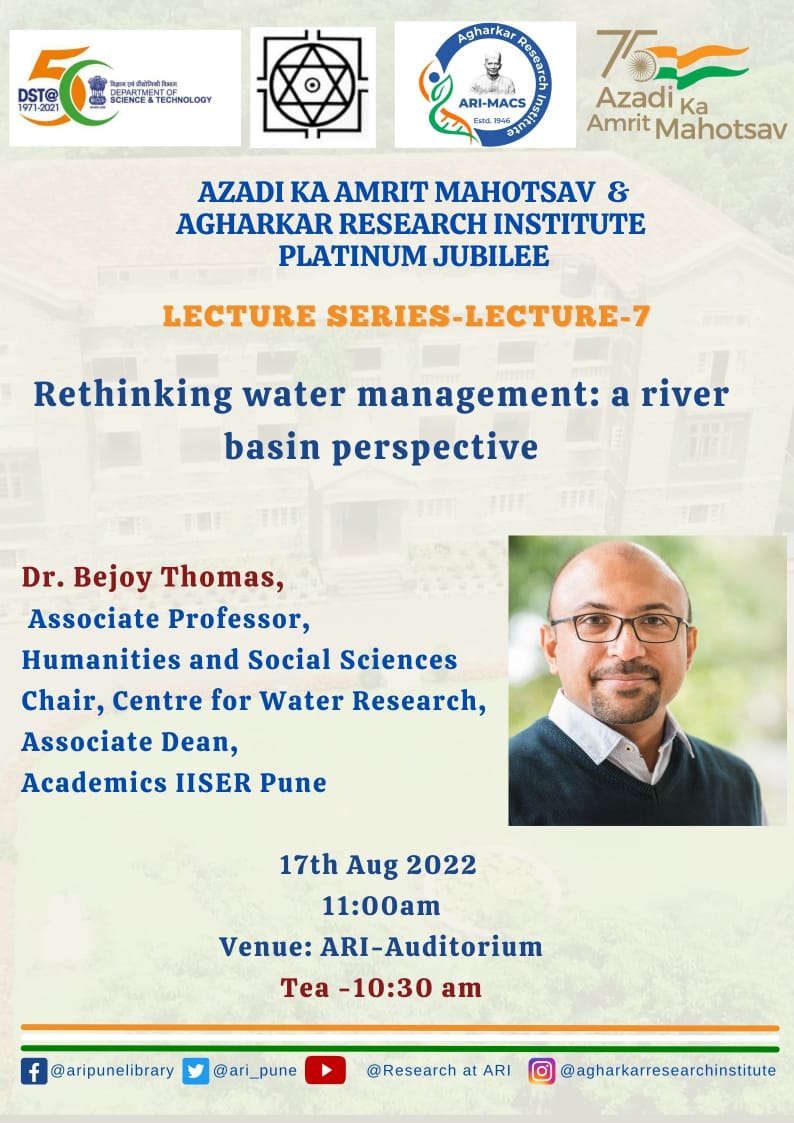
Google Scholar / Social Media
Name : Dr. Mandar Datar
Designation : Scientist – D
Brief Background :
Dr. Mandar Datar has been working in the field of plant taxonomy for the last 20 years. After doing his M. Sc. in Plant taxonomy from Pune University, he received a Research Fellowship from “Ministry of Environment and Forests and climate change (MOEFCC)” between 2001 and 2004. For his Ph. D., he worked in the Botanical Survey of India on Flora of BhagwanMahavir (Molem) National Park, Goa, and received his degree in 2007 from Pune University.
BSI later published the same work in the form of a book. He is working as a Scientist in the Biodiversity and Paleobiology group of Agharkar Research Institute since December 2010. He is a nominated Member of the International Union of Conservation of Nature (IUCN)’s SSC-Western Ghats Plant Specialist Group. He also works as a member of the ‘Grassland and Fodder study group’ constituted by the Government of Maharashtra.
He is also involved in popularizing the science by giving talks, writing books and articles in local newspapers and magazines, and conducting a “Certificate course in Home Gardening” organized by MACS.
Contact Details :
- M.Sc. Ph.D
Research Interests
Presently, our lab is studying the ecology of unique habitats of Northern Western Ghats (NWG), primarily focusing on species composition, their unique traits and endemism. NWG shows an extreme climate of four months of heavy rains and eight months of the severe dry period and is dominated by habitats such as rock outcrops and vertical basaltic cliffs, treasure-troves of endemism. Species growing in this region have adapted in various ways to survive in these extremities. Exploring these species for their traits that help them survive has multiple applications in the current scenario of climate change and global warming.
One such trait of species that is being studied by maintaining germplasm in the garden is desiccation-tolerant grasses. We also research the effect of fragmentation on the forest composition of NWG focusing our research on protected areas and sacred groves. Our lab has studied wild edible plants of the Northern Western Ghats region, documenting 157 species, and the work was published as a book.
This study is of immense value in terms of widening the food basket of growing populations. We also work to conserve threatened and rare species by multiplying them using micro-propagation methods and reintroducing them in the wild. A few species have already been propagated and will be planted in the wild soon. The lab also collaborated with Dr. RK Choudhary to do taxonomy and molecular phylogeny of plants like Ischaemum, Capparis, and Eriocaulon. Very recently we also published a ‘Compendium of Raw Botanical Drugs of Maharashtra’ documenting major medicinal plant resources of the state.
Research Projects
Research grants were received from Science and Engineering Research Board, DST, New Delhi; Tata power corporation, India: Rajiv Gandhi Science and technology commission, Mumbai and Forest department, Maharashtra state.
Extramural Ongoing as PI
- Conservation of Selected Endemic Species of Orchids of Northern Western Ghats through Ex-Situ Multiplication and Reintroduction in Wild. Funding agency: Tata Power Company Limited. Funds Received: 30 lakh
Extramural Completed as PI
- Muraina-grasses of India: addressing the polymorphism and interspecific variations through morphological, ecological and molecular phylogenetic studies. Funding agency: SERB, Funds Received: 46 lakh.
- Development of Crude Drug Repository for medicinal plant resources from Maharashtra. Funding agency: Rajiv Gandhi Science and Technology commission, Funds Received: 53 lakh.
- Survey of Wild edible Plants and wild relatives of crop plants from Maharashtra. Funding Agency: Forest Department, Maharashtra State. Funds Received: 5. 10 lakh.
In house as PI
- Digitizing AHMA (Core and ongoing activity)
- Plant Community studies of selected grassland patches of Maharashtra (Completed).
- Unravelling vascular plant endemism of northern region of Western Ghats (Completed).
Ph. D. Projects:
- Plant life between inundation and desiccation: a study on rock outcrops of Northern Western Ghats, India: Ms. Aboli Kulkarni
- Forests of Northern Western Ghats: diversity, composition and effect of disturbances on tree diversity: Mr. BhushanShigwan
- Study of cliff dwelling vascular chasmophytes from Northern Western Ghats with special emphasis on desiccation tolerant species: Mr. Smrithy Vijayan
1. Books
Datar MN, AS Upadhye (2016) Forest Foods of Northern Western Ghats. Agharkar Research Institute publication.
Datar MN, P. Lakshminarasimhan (2013) Flora of BhagwanMahavir (Molem) National Park and Adjoinings, Goa. Botanical Survey of India, Kolkata
Maurya S., Datar MN, Choudhary RK (2020). The Genus Capparis L. in India. Agharkar Research Institute publication.
Upadhye AS, Datar MN (2020) Compendium of Raw Botanical Drugs of Maharashtra Agharkar Research Institute publication.
Ghate VS, Sane HD, Datar MN (2010) Manual For Field Botany. MACS and Nisargsevak.
Pande S, Sant N, Vishwasrao V, Datar MN (2010) Wild Orchids of Northern Western Ghats Tata Power and Ela Foundation.
Pande S and Datar MN (2016) Seeds of Western India. Ela Foundation and Directorate of Social Forestry, Forest Department, Maharashtra.
2. Recent Research Publications:
Shigwan, B. K., Kulkarni, A., Vijayan, S., Choudhary, R. K., & Datar, M. N. (2020). An assessment of the local endemism of flowering plants in the northern Western Ghats and Konkan regions of India: Checklist, habitat characteristics, distribution, and conservation. Phytotaxa, 440(1), 25-54.
Bokil, S. A., Choudhary, R. K., Tamhankar, S., & Datar, M. N. (2020). Ischaemum janarthanamii (Poaceae, Andropogoneae), a new species from the Western Ghats, India: evidence from morphological and molecular data. In AnnalesBotaniciFennici (Vol. 57, No. 4-6, pp. 321-330). Finnish Zoological and Botanical Publishing Board.
Maurya, S., Darshetkar, A. M., Datar, M. N., Tamhankar, S., Li, P., &Choudhary, R. K. (2020). Plastome data provide insights into intra and interspecific diversity and ndh gene loss in Capparis (Capparaceae). Phytotaxa, 432(2), 206-220.
Shigwan, B., Ghate, K., Karandikar, M., & Datar, M. N. (2020). Traditional Knowledge in Sealing Reassessment Gaps of Threatened Species: an Example of a Grass from Northern Western Ghats of India. National Academy Science Letters, 1-5.
Datar, M. N., Dongre, S., &Gadgil, M. (2019). A critical evaluation of environmental impact assessments: a case study of Goa mines, India. Current Science, 117(5), 776.
Darshetkar, A. M., Datar, M. N., Rao, G. R., Tamhankar, S., Prabhukumar, K. M., &Choudhary, R. K. (2019). Eriocaulonkaraavalense (Eriocaulaceae), a new species from India based on morphological and molecular evidence. In AnnalesBotaniciFennici Vol. 56, No. 4-6, pp. 305-316
Darshetkar, A. M., Datar, M. N., Tamhankar, S., Li, P., &Choudhary, R. K. (2019). Understanding evolution in Poales: Insights from Eriocaulaceaeplastome. PloS one, 14(8), 1-16.
Datar, M. N., &Tetali, P. (2019). Hill Forts: Abodes of Endemic Plants and Potential Priority Conservation Areas of Northern Western Ghats. National Academy Science Letters, 42(4), 375-378.











